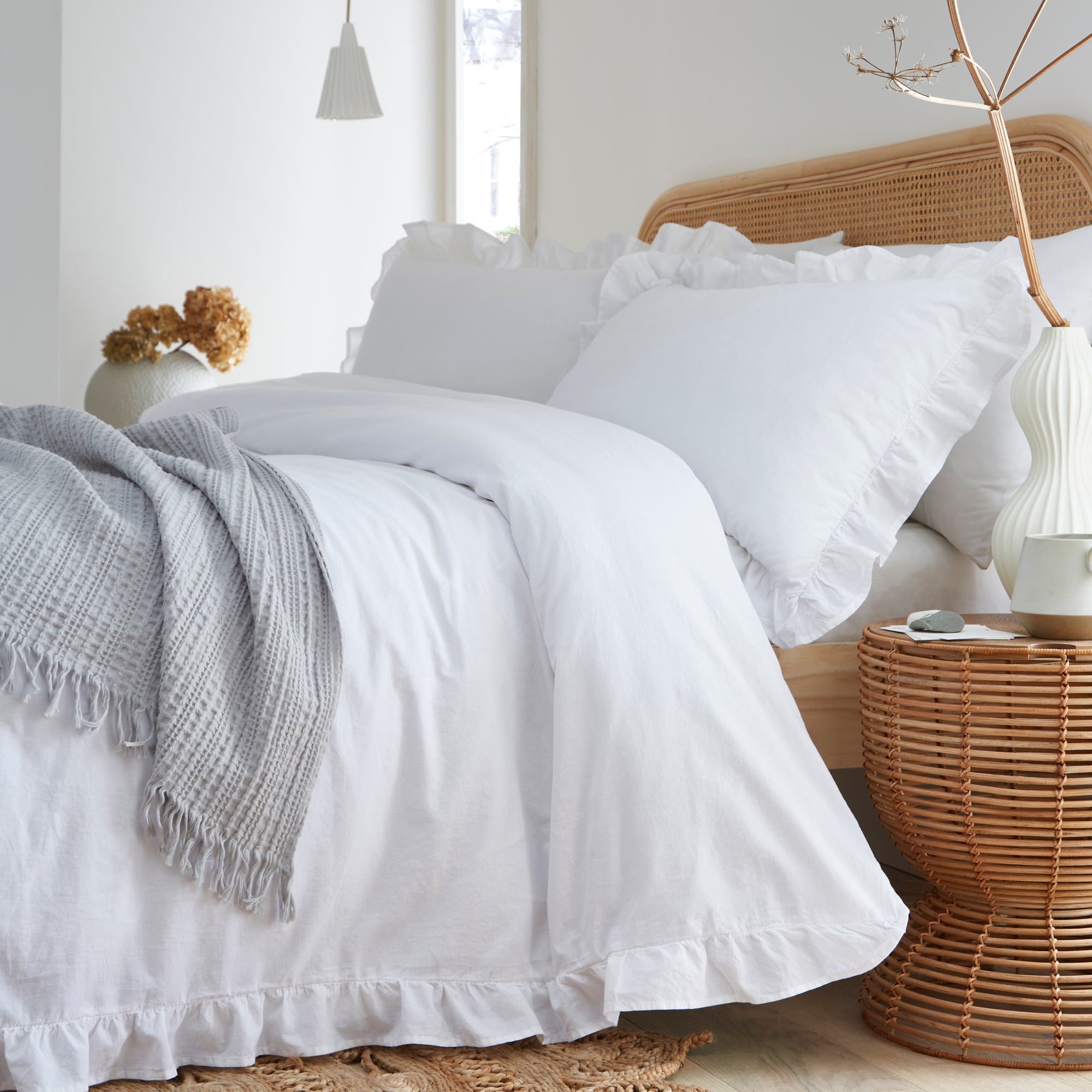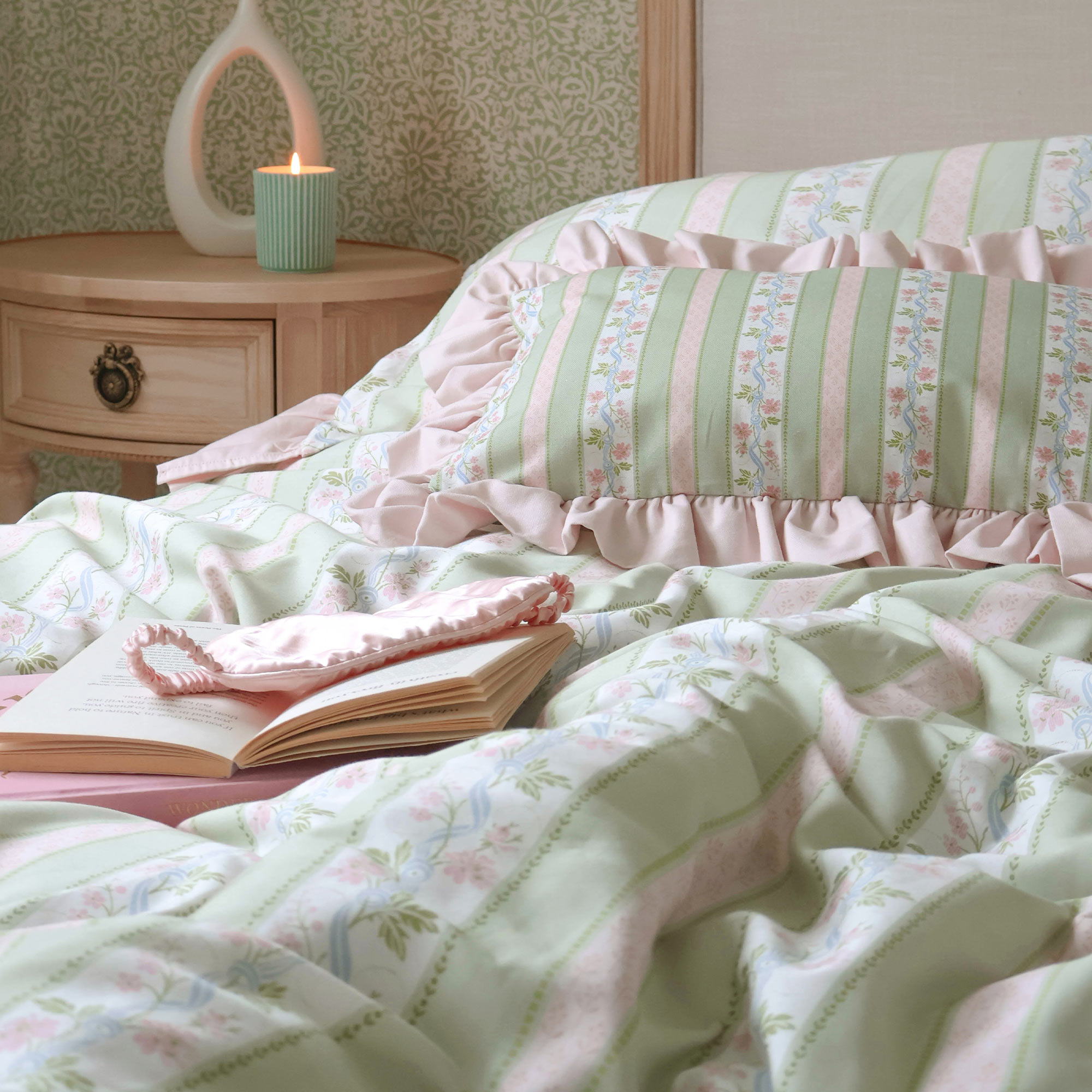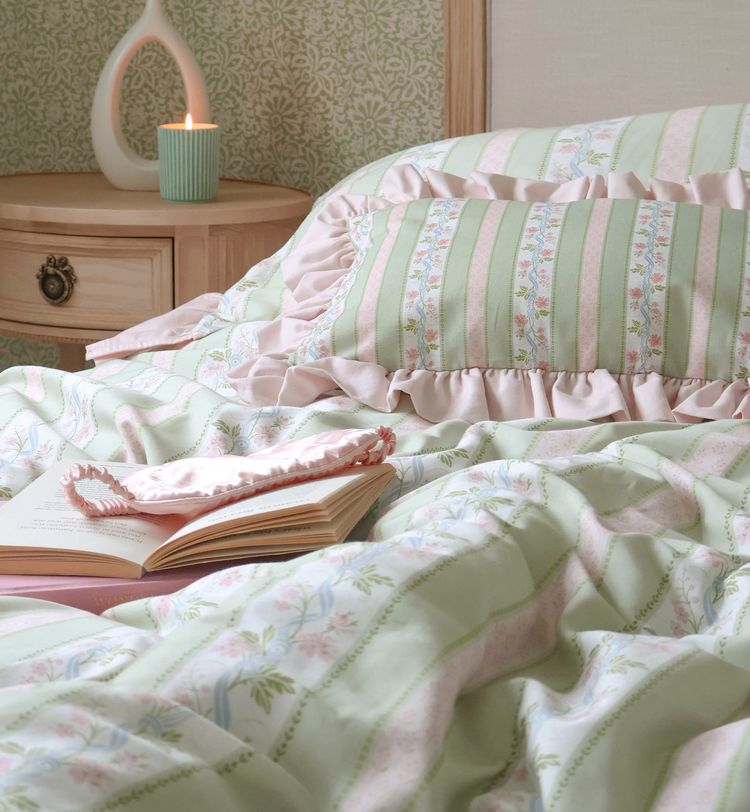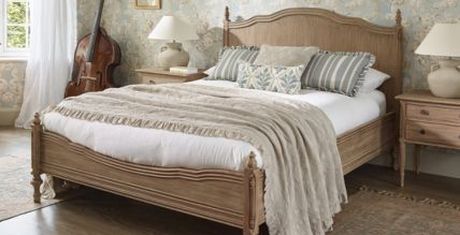
The artistry involved in creating a French bed is second to none. From the meticulous detailing that goes into the upholstery, or the intricate carvings each of our handcrafted French beds boasts, we’re proud of just how talented our artisans are. We’re passionate about the beds we sell, but also the accessories that make the bed personal to you. Today, we’ve sat down with Georgia to talk all things bed linen. She’s shared her tips, styling advice, and given us some insight into what’s next for bed linen.
What is your favourite bed linen of all time?
My all-time favourite bed linen is the beautiful Ruffled Romantic Bed Linen Set. This set combines texture in two ways, so you get the texture of the soft Egyptian cotton in conjunction with the ruffle which embodies flamboyance and femininity. The ruffles were inspired by the recent fashion for ruffled shoulders on clothing, which is a personal favourite in my wardrobe!
What do you look for when you’re designing or sourcing bed linen?
Two things take my interest when I’m designing or sourcing bed linen: ethics and style. I care deeply about the quality of cotton, and the sustainability of it. I like to ensure our products have been created with ethical farming practices, and this is something I am passionate about. After I’ve ascertained the origin is suitable for our values at French Bedroom, I’ll focus on the amenity or flexibility of use. It’s paramount that bed linen designs can be used across seasons, in terms of cosiness and colour palette! It’s also important to keep in mind the longevity of the design in the face of changing trends – will the bed linen still appeal to your taste in five years time, as your personal style matures?
In your own home, are you more pattern or plain?
I’m all about plain in my own home. I’m a big fan of romantic and ornate beds so I like the bed linen to play a supporting role, rather than taking centre stage. Plain bed linen opens the opportunity for a myriad of textures using patterned cushions and bedspreads, meaning you can transform the feel of the room using only accessories.

For the romantics.
Made exclusively for French Bedroom, this cotton bed linen set is crafted from long-staple cotton fibres, in an exceptionally luxurious 100% cotton sateen, which promises butter-like softness, a subtle sheen, and enduring quality.
What do you do to make sure colours and textures complement?
I love to mix pattern and texture but not in the same piece, so I look for a common feature across the pieces I intend to use. For example, I’ll pair a brightly patterned bed linen with a plain cushion but use texture on the cushion. On photoshoots, I love to play around with scale and am a personal fan of large-scale blooms.
What are the benefits of cotton, linen, or silk being used as a bed linen material? What are the differences?
All three are incredible materials to use when dressing your bed but have different and unique properties. Materials such as linen and cotton will wick away moisture much better than a polycotton mix, so if you suffer from hot sweats this would be your preferred choice. Silk is a luxurious material to use and is high in proteins, making it much less absorbent which has many beauty benefits. Dermatologists have confirmed silk’s anti-ageing benefits, as it helps skin retain its natural moisture. Silk contains the same proteins as hair, which when slept on, prevents hair from becoming dry and brittle, leaving you with healthy and sleek hair. However, like everything in life, it is a balance between practicality and usability. Bed linens made from polycotton are much easier to wash and dry, and a lot of the time do not require ironing, making them a quick win for usability.
What top tips do you have to help people get it right?
If you’re a fan of silky soft bed linen, chose sateen. If you like your bed linen to feel rougher against your skin, choose percale. There will be no difference in the thread count between the two, but the way the waft and weft threads are woven have an impact on the way the bed linen feels.

If you’re not a fan of ironing, choose a bed linen that is textured, such as our Apricity Crinkle Bed Linen Sets in White, Sage Green, Peach Fuzz. Additionally, a great way to work with bedsheets that have not been ironed is to cover it up with a quilted bedspread, such as our Peachskin Quilted Bedspreads in Oatmeal, Sand, Lilac, White, Petal Pink, and French Grey.
Finally, don’t be lured in by high thread counts (relating to the number of threads per square inch of bed linen). The higher the thread count, the harder it will be to launder. The optimum thread count for both comfort and practicality is 200-400TC.
What are the things you always look out for on the little white care labels?
How to launder - if you’re someone who likes to line dry their bed linen, button or popper closures on the duvet edge will be fine, but if you tumble dry, I advise you to avoid plastic popper closures as they may melt in the heat of the dryer.
If you’re using white bed linen, look for how high a temperature you can wash the bed linen. Washing at 30 degrees won’t kill all bugs or remove all stains.
Check where it’s made. There are some very unsavoury practices occurring in India right now with exceptionally sad statistics around cotton farmer suicide, so I avoid buying bed linens from India (both as a Buyer and as a consumer) unless I’m 100% sure of the cotton farm it’s produced from.
Are there any forthcoming or emerging trends in the bed linen market you can share with us?
It’s no secret that interior design follows catwalk trends. Over the last twelve months, we’ve enjoyed the ditsy floral prairie trend in everything from dresses, hair ties, phone cases, and water bottles, so I’m delighted to see it transcribe to bed linens. We have some small scale nostalgic floral bed linen designs featuring flower motifs on our drawing board at present, due to launch in the coming week. To pair alongside this lovely bed linen, we will be launching matching bedspreads and something new to the French Bedroom, curtains! Watch this space!

Our Regency Rose Bed Linen Set, made exclusively for French Bedroom, this bed linen set offers the comfort of old-world charm and captures a soulful, and effortlessly nostalgic feeling.
Shop Bed Linen















